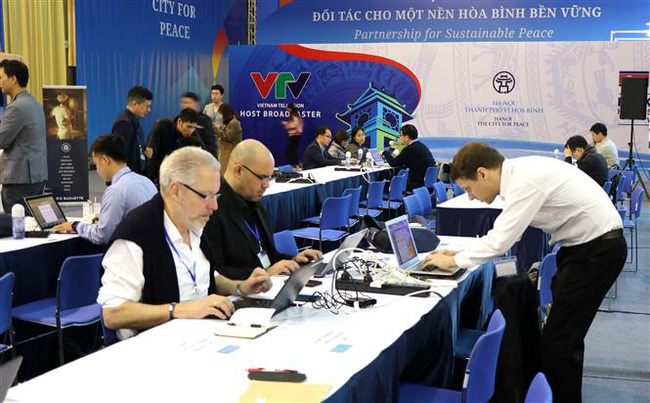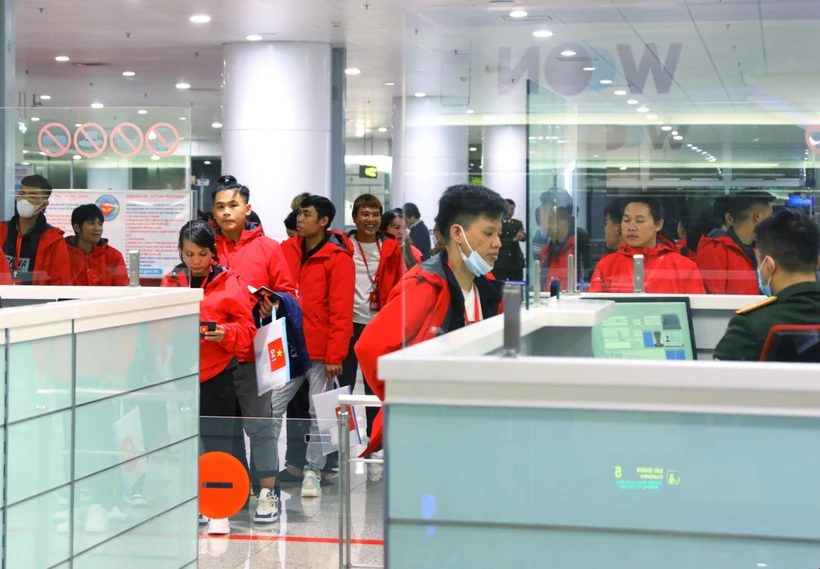Nghiem Thi Thu Huong, head of a garment workshop of the disabled in Lang Son province, instructs a trainee in how to design clothes on computer. (Photo: VNA)
There are more than 7 million PWDs in Viet Nam, accounting for over 7% of the population aged 2 and over.
Amid the strong IT development, the Party and State have issued many policies as seen in the Law on PWDs and by-law documents to facilitate PWDs’ IT access and use, thus narrowing the gap between PWDs and able-bodied persons.
Dang Van Thanh, Permanent Vice Chairman of the Viet Nam Federation of Associations for PWDs, said the development of science and technology has substantially supported PWDs to fully and equally integrate into society as it helps them engage in the exchange and search for information and seeking jobs.
Ngo Thi Huyen Minh, General Director of the Nghi Luc Song (Will to Live) JSC – a social enterprise, said her company provides training for about 120 PWDs each year, and 70% of those trained in IT have gained jobs with good salary.
The firm is still seeking more IT-related jobs to train PWDs in the future, she noted.
Thanh noted that the State has earmarked budget for vocational training and job creation for PWDs, many of whom have accessed concessional loans, vocational training, and capacity improvement training to develop production and business activities.
However, he said, aside from the state budget, the engagement of enterprises and social organisations is also critical to helping PWDs integrate into the community.
The disabled are still facing numerous difficulties in technology access. In particular, visually impaired persons still need help from others to handle procedures on public service portals.
Le Thai Binh, a disabled in Ky Tan commune of Ky Anh district, Ha Tinh province, has established many charity organisations to support PWDs. (Photo: VNA)
The Ministry of Information and Communications (MIC) has issued a circular on the application of standards and technology to facilitate PWDs’ access to and use of information and communications products and services.
Dinh Viet Anh, Vice Chairwoman of the Viet Nam Blind Association, said she hopes the coverage of this circular will be expanded to make it compulsory for all agencies and organisations to ensure their websites are friendly to visually impaired persons in particular and PWDs in general so that they can easily access information in the digital environment.
To help PWDs master technology, the Viet Nam Federation of Associations for PWDs and 50 member organisations have frequently held IT training courses.
The federation has also coordinated with the MIC’s National Institute of Software and Digital Content Industry to design a data software on PWDs which includes information on the number of PWDs, their forms of disabilities, and those with demand for education, health care, and employment. Basing on this, it will propose and promote the amendment of policies to give the best possible assistance for vulnerable groups, according to Thanh.
In the coming time, the federation and member organisations will carry out more activities to support PWDs, especially stepping up training in IT and online business skills, along with the implementation of support policies so that PWDs can utilise IT to improve their life quality and reduce dependence on society.
For over 10 years since the ratification of the UN Convention on the Rights of PWDs and the enforcement of the Law on PWDs, Viet Nam has made unceasing efforts to improve PWDs’ accessibility. Digital transformation in multiple areas has proved a boost to their enjoyment of rights and integration into society./.
Source: VNA











